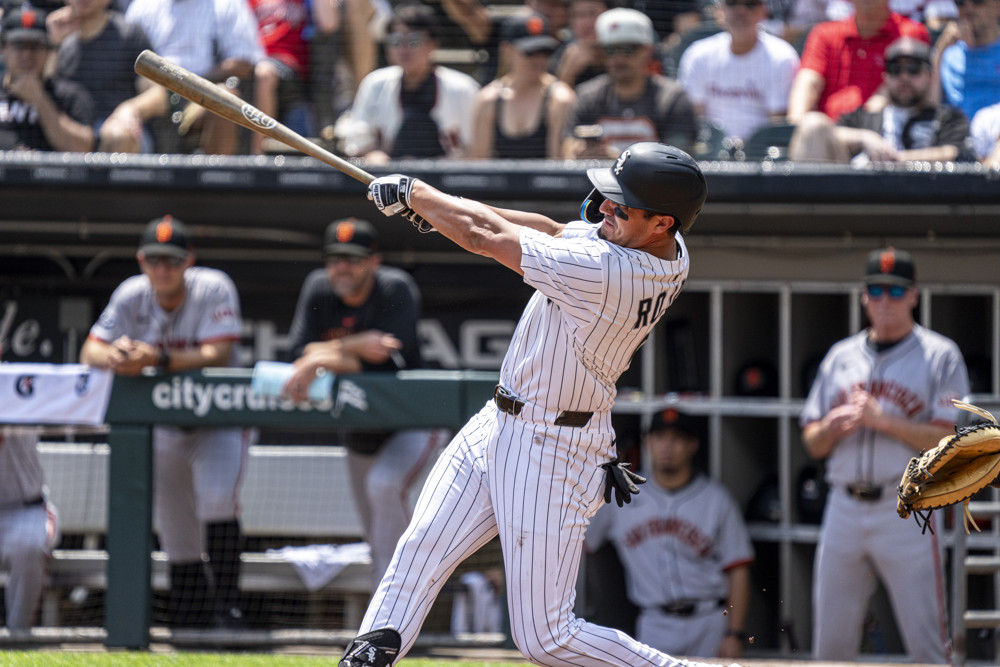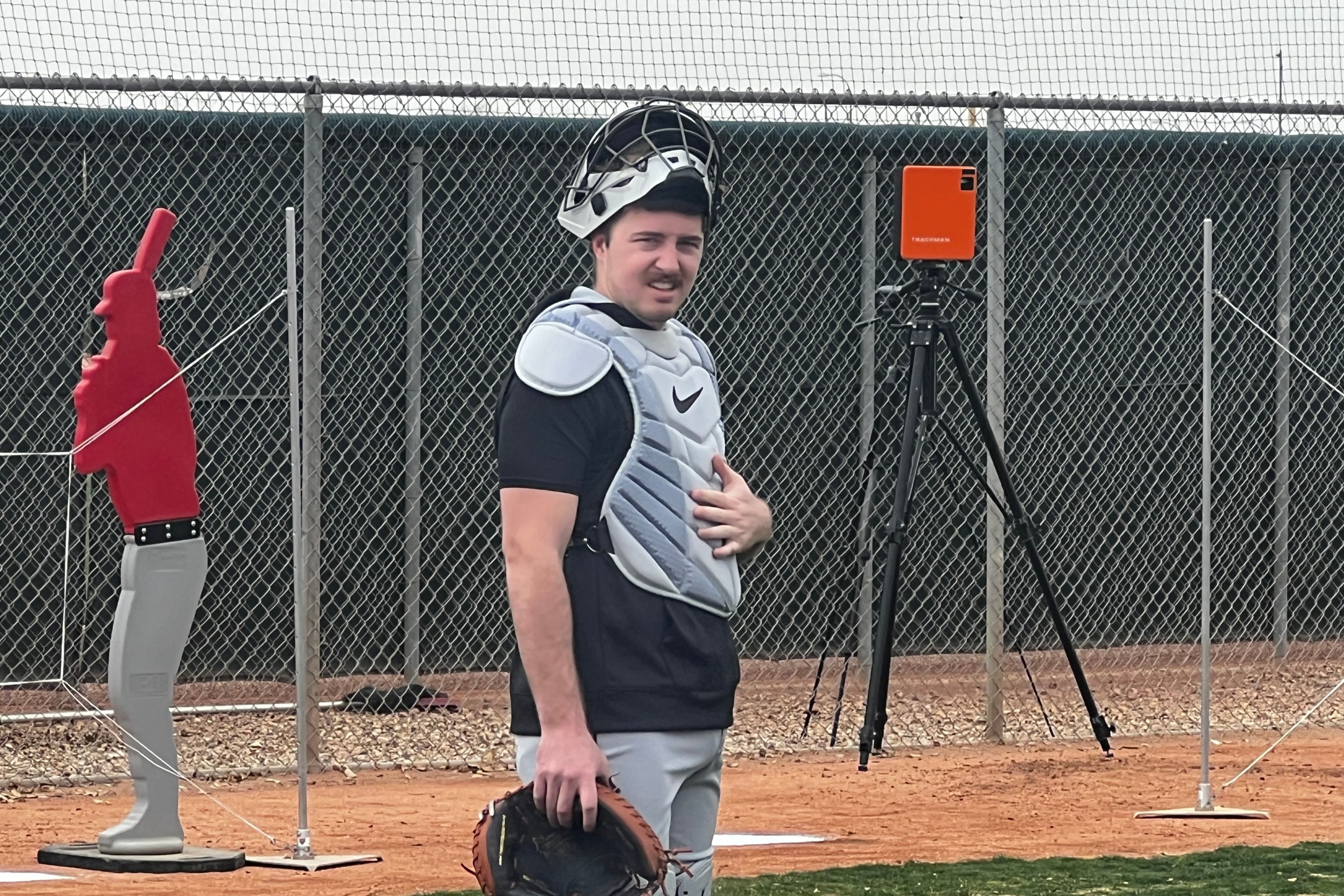When it comes to the White Sox's modest free agent shopping spree last winter, Josh Rojas is on track to register as the biggest whiff, but at least there's a documented explanation behind it.
His tenure with the White Sox probably looks different if he doesn't break his big toe during spring training, as Will Venable alluded to the injury's lingering impact while eulogizing Rojas this weekend. But as it actually unfolded, an offensive profile that was already shaky enough to get non-tendered couldn't withstand a blow to the foundation. FanGraphs had him as the third-least valuable player to accrue 200 plate appearances, and that sounds about right.
But while the Rojas signing failed to pan out, it also didn't interfere with any grander plans, which is the next-best thing you can say about a flop. Part of the reason he hung onto a roster spot until mid-August, a full month after the White Sox beat saw him get pulled into the manager's office for a meeting that foreshadowed his sharply reduced role, is that he seldom got in the way.
That's evident in the present shape of the infield. If Rojas hit .240/.310/.375 with excellent defense and found a taker at the trade deadline, the picture wouldn't look any different than it does now. You'd still expect the Sox to roll out Miguel Vargas at third, Colson Montgomery at short, and a mix of Chase Meidroth and Lenyn Sosa at second. You might not expect Sosa to also be in the mix at first base with Vargas and Curtis Mead, but that has nothing to do with Rojas, and everything to do with Andrew Vaughn.
It could've gotten messier far earlier, but the younger White Sox infielders stagger-started their progress in a way that always afforded some role for Rojas. Perhaps his left-handedness wouldn't have been a distinguishing feature if Montgomery won the shortstop job out of spring training, but Montgomery opened the season in such disarray that the White Sox prescribed a vision quest in the desert at the end of April, and he was only declared suitable for a major league audition in July. Rojas could have clogged the pathways of Meidroth and Sosa, but he was instead around as a feasible alternative when one of Meidroth's nagging injuries prevented him from answering the bell, or during the time that Sosa's bat wasn't dynamic enough to compensate for the defensive lapses.
All the while, there was usually one infielder -- Jacob Amaya, Vinny Capra, Bobby Dalbec, the most fleeting glimpse of Tristan Gray -- who showed what being blocked really looked like, and that's the spot Rojas ended up occupying himself over his last several weeks on the roster.
The only real victim of a clogged infield was Brooks Baldwin, but that's only if the White Sox ever really regarded him as an infielder in the first place. He started picking up his outfielder glove near the end of spring, was left out there when the White Sox dealt with depth issues early, and he was the one who had to report to Charlotte and bide his time by homering every other day until Luis Robert Jr.'s hamstring injury created a genuine vacancy.
But even then, the White Sox had ways to play Baldwin on the dirt if they really wanted to (Amaya's starts at shortstop, namely). They just didn't seem to want to, whether because they weren't enamored by his defense there, or because they looked at their outfield depth chart and decided the pain was worth the gain. I still doubt the strategy -- I wanted to see Baldwin's utility profile develop organically, rather than thrusting him into positions he'd lost touch with -- but he returned from the minors with a plan to sit deeper in his crouch at the plate, and now is hitting .281/.340/.494 since returning to the roster in July. Baldwin's outfield play has also been cleaner over the last two weeks, since the last inexplicable drop that required Venable to issue public displeasure.
Thirty-two games remain on the slate before we can safely say "all's well that ends well," but all the individual developmental arcs are more or less on track toward that conclusion, and I think Rojas served a purpose toward that goal, even if was in the form of all filler, no killer.
If I've learned anything from writing about three different rebuilds on a daily basis, it's that it doesn't take long to get sick of seeing somebody who isn't getting the job done. Rojas fit that description, sure, but the one-and-done nature of his existence made him a natural candidate to wear it. If he weren't around, perhaps the shine wears off a ground-down Meidroth before Montgomery can relieve him, or the combination of Sosa's mistakes and plate discipline causes Venable to be as bald as he was in college. Instead, everybody the White Sox hoped would be a viable infield option for 2026 remains one.
That the biggest position player free-agent signing of the offseason is currently out of the league in August sounds rough, and another White Sox hitter sitting near the bottom of the WAR leaderboard is all too familiar. That a veteran stopgap was pushed off the roster by younger and more intriguing talent beneath him -- and could have been pushed off weeks before it happened -- is another one of those small signs of improving organizational health, even if more substantial ones remain elusive.






